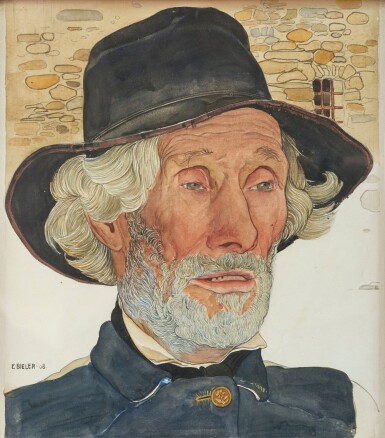
Ernest Biéler
Le vieux sonneur, Claude Antoine à Savièse, 1908
Lot Closed
December 14, 02:25 PM GMT
Estimate
100,000 - 150,000 CHF
Lot Details
Description
Ernest Biéler
1863 - 1948
Le vieux sonneur, Claude Antoine à Savièse, 1908
Watercolour on paper laid down on cardboard
Signed and dated lower left;
titled on the reverse
32.5 x 28 cm (unframed); 52 x 37.2 cm (framed)
This work will be included in the forthcoming Catalogue Raisonné of the artist currently being prepared by Ethel Mathier.
Acquired from the above by the present owner in 1977
At the turn of the XXth century, both the Swiss national exhibitions and the increasing industrialisation of the country stimulated the development of a national artistic style. Ernest Biéler, an eminent member of the School of Savièse, perceived the social transformations of the time as a threat to the cultural patrimony and defended a return to a simpler and more authentic way of life. The artist’s commitment is reflected in his work, which mostly focuses on rural Valaisan subjects in a style inspired by early Netherlandish and Italian Renaissance techniques.
In this composition, Biéler portrays a prominent figure of the village: the old bell ringer of Savièse, named Claude Antoine. The latter occupied a key function within the community, as he set the rhythm of the inhabitants' day. In contrast to other compositions by Biéler, the character's physiognomy is extremely detailed, while the background is limited to a few stones possibly representing the church of Savièse. Wearing his hat and traditional costume, the old bell ringer is depicted with a remarkable elegance and meticulousness, attesting a keen sense of detail. Whether the hair, the appearance of the mouth, the wrinkles or the eyebrows, all facial features of the man are reproduced with the greatest precision and drawn with delicate fine lines.
Through this portrait, Biéler succeeds in revealing the authenticity and traditions of rural life. Of exceptional quality and vibrant colours, this work appears for the first time at auction.
You May Also Like










